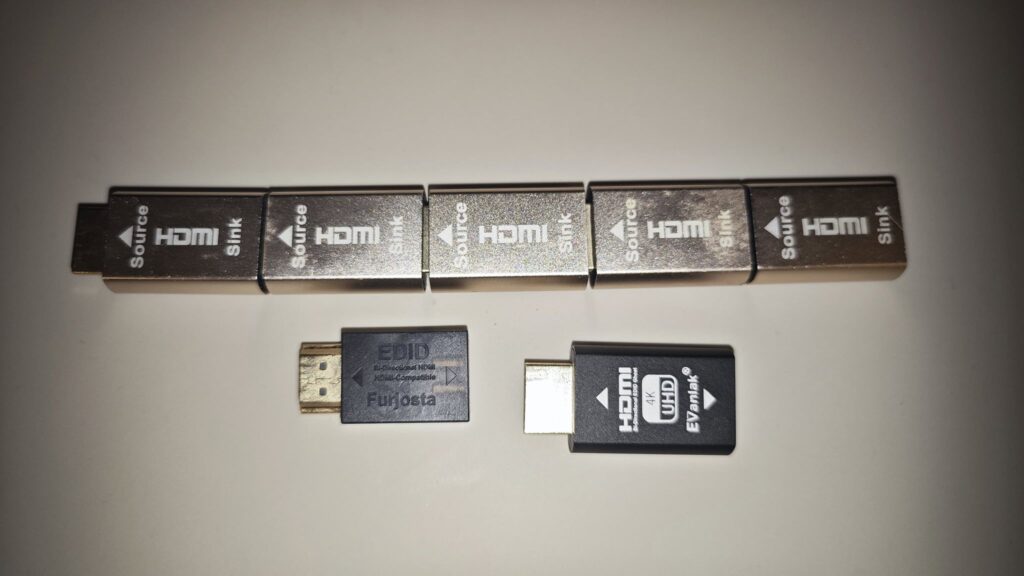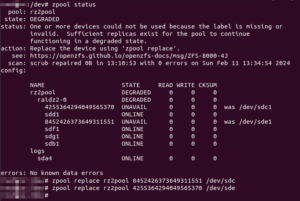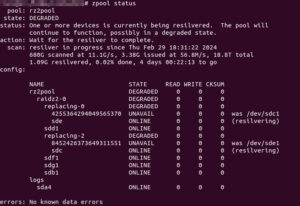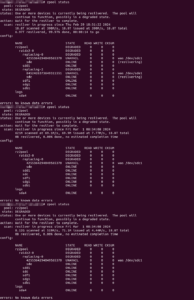When using a headless server, certain operating systems’ window managers don’t handle a lack of attached display properly, often ending up with issues when attempting to remotely mirror/access session 0. Some workarounds exist, including “faking a display“, but that has serious side-effects when actually hooking up a real display or when working with some software that could add virtual displays (making that “fake display” suddenly part of a multi-monitor setup which you can’t see).
Similarly, most window managers flail (not fail) spectacularly when one or more displays is/are switched away from it (when using a KVM that does not have EDID emulation), resulting in screen resizing, application window movements et. al., and switching it back fails to relocate certain windows and UI elements back to the previous location/size/state. Whereas this point may be more an issue with combination of OS and application, it is still an irritating issue for KVM users.
The simple solution I have found is to always use a HDMI EDID emulator with pass-through at the output display port/s, meaning that:
- for the former use case (of headless servers), the machine always thinks a display is attached and session
0will be on that/those “display/s”, with the ability to just plug my 13.3″ portable monitor* via HDMI (and still stay sane) - and for the latter use case, I can switch away one or more displays and the machine still thinks the display/s are working – ergo no “dancing” windows
This has certain limitations though:
- unless the pass-through copies the EDID of the sink (i.e. display), the output (i.e. resolution, refresh rate, audio capabilities) will be limited to the EDID “mode”/capabilities of the HDMI emulator
- some emulators fail to copy the sink’s EDID after starting/initializing (instead using some preset), so for those oddballs, you will need to ensure you start up the system (i.e. start providing power to the pass-through emulator) with the display “attached” (e.g. KVM switched to machine being started)
- “unusual” modes (like wide and ultra-wide screens like the my 5120×1440@120/144Hz Prism X490 Pro* and Asus XG49WCR* with high refresh rates) or attempting to use HDR and/or VRR features would fail, with HDMI sync limited (usually to UWQHD i.e. 3440x1440p @ 30Hz with no audio)
-
- I am guessing here, but
- maybe the HDMI pass-through emulators just cannot handle bandwidth required and therefore will have to sync at lower rates/modes
- maybe the HDMI emulator’s EDID table does not have the modes in question – not sure if reprogramming the EDID one would work
- I am guessing here, but
For easy reference (and purchase, if you will), I use several of these:
- generic 1080P HDMI emulator w/pass-through*
- Evanlak 4K HDMI emulator w/pass-through*
- Furjosta 2160P HDMI emulator w/pass-through (does not work properly, don’t recommend)
*NOTE: This is an affiliate link, so I may get some commission, but at no additional cost to purchasers purchasing through this link. For Amazon Affiliate links, as an Amazon Associate, I earn from qualifying purchases.







